|
|
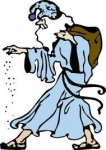
«Mr. Sandman« (sometimes rendered as «Mister Sandman«) is a popular song written by Pat Ballard which was published in 1954 and first recorded in that year by The Chordettes. The song’s lyrics convey a request to «Mr. Sandman» to «bring me a dream» – the traditional association with the folkloric figure, the sandman.
[…]

m
«My Favorite Things» is a show tune from the 1959 Rodgers and Hammerstein musical The Sound of Music. The song was first introduced by Mary Martin and Patricia Neway in the original Broadway production and sung by Julie Andrews in the 1965 film.
In the musical, the lyrics […]
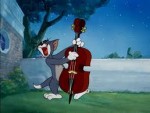
•→ Louis Jordan ⇐[1944] ∞ Nat King Cole & Ida JAMES ↓
I got a gal who’s always late anytime we have a date But I love her, yes I love her I’m gonna walk right up to her gate – see if I can get it straight ‘Cause I […]
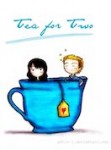
A song from the 1924 musical No, No, Nanette with music by Vincent Youmans and lyrics by Irving Caesar. It is a duet sung by Nanette and Tom (Louise Groody and Jack Barker) in Act II as they imagine their future.
The stage musical inspired David Butler‘s musical film in 1950, […]
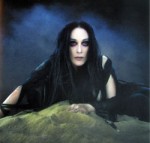
‾ «This next song was sung by Billie Holliday, called Gloomy Sunday, and when she first recorded on the radio, there was a … protest … from the record company, because it was … uh … it was too pessimistic and depressing. Therefore they had it changed the ending to make it more… optimistic and […]
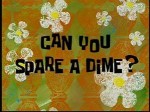
Also sung as «Buddy, Can You Spare a Dime?«, is one of the best-known American songs of the Great Depression.
Written in 1931 by lyricist E. Y. «Yip» Harburg and composer Jay Gorney, «Brother, Can You Spare a Dime?» was part of the 1932 musical New Americana; the melody is based on a Russian lullaby […]

Written by John Kander and Fred Ebb in the style of a traditional German song, sung by the Nazi youth in 1972 musical ‘Cabaret’, to stir up patriotism for the «fatherland». It has often been mistaken for a genuine «Nazi anthem» and led to the songwriters being accused of anti-Semitism, which proves how brilliantly Bob Fosse depicted […]
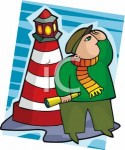
–
This novelty song has been a theme tune twice over. It was used in the soundtrack to A Clockwork Orange and, more recently, featured in a Marks and Spencer’s ad. The ad features some of the world’s most beautiful women and Myleene Klass. Voice = Erika Eigen ↓

◊ English Cartoon Nursery Rhymes ↓
◊ Johnatan Richman & the Modern Lovers ↓ 1977 <
The windows on the bus go up and down Up and down,up and down The windows on the bus go up and down All through the town.
The wheels on the bus go round and round Round and round, […]

Nursery Rhyme
The Wooden Bridge
The ‘London Bridge is falling down’ Nursery Rhyme is based on the one of the most famous landmarks in London. Its history can be traced to the Roman occupation of England in the first century. The first Bridge was made of wood and clay and was […]
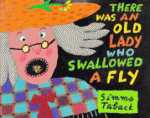
A favourite Nursery rhyme amongst children whose famous lyrics of «There was an old lady» aid memory retention. The poem is a relatively modern rhyme and therefore has no origin in history! The imagery of «There was an old lady» paints a very strong picture which stimulates the imagination whilst emphasising the relative sizes and order […]

♫ Dem bones, dem bones, dem dancing bones. [Skeleton dance.] Dem bones, dem bones, dem dancing bones. [Skeleton dance. Move to the right.] Dem bones, dem bones, dem dancing bones. [Skeleton dance. Move to the left.] Doin’ the skeleton dance. [Skeleton dance.]

A video designed for toddlers and children to learn about animals and the sounds they make through rhyme, song and dance.
These are the sounds that the animals make (x4)
The Cat goes meow The Cow goes moo The Pig goes oink The Rooster goes Cocka doodle doo
The Hen goes cackle The Dog […]

The first of the two operas by William Walton (1902-1983). The libretto was by Christopher Hassall, his own first opera libretto, based on Chaucer‘s poem Troilus and Criseyde.
◊ SYNOPSIS
• Act One – Troy, the Citadel.
Troy has been besieged by the Greeks for ten years. The people of Troy are desperately praying at the […]
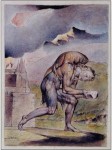
[1872-1958]
¤ The Pilgrim’s Progress
An opera by Ralph Vaughan Williams, based on John Bunyan‘s allegory The Pilgrim’s Progress. The composer himself described the work as a ‘Morality’ rather than an opera. Nonetheless, he intended the work to be performed on stage, rather than in a church or cathedral. Vaughan Williams […]

A semi-opera in five acts with music by Henry Purcell and a libretto by John Dryden. It was first performed at the Queen’s Theatre, Dorset Garden, London, in late May or early June 1691.
The plot is based on the battles between King Arthur’s Britons and the Saxons, […]
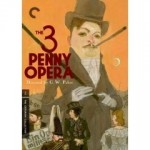
The Threepenny Opera proclaims itself «an opera for beggars,» and it was in fact an attempt both to satirize traditional opera and operetta and to create a new kind of musical theater based on the theories of two young German artists, composer Kurt Weill and poet-playwright Bert Brecht. The show […]
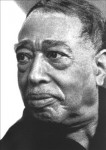
¤ Count Basie [1904-1984]
Count Basie was among the most important bandleaders of the swing era. With the exception of a brief period in the early ’50s, he led a big band from 1935 until his death almost 50 years later. Basie’s orchestra was characterized by a light, swinging rhythm section that he […]

Jazz began to «swing» as musicians began to adopt swing eighths, the string bass, high hat cymbals, and a looser, more rhythmic feeling . . . ⇒
This change occurred gradually starting in the twenties notably with Louis Armstrong, and continued on into the 40’s. A lot of the music that […]

«The Sound of Jazz» is a 1957 edition of the CBS television series Seven Lively Arts, and was one of the first major programmes featuring jazz to air on American network television. The one-hour program aired on Sunday, December 8, 1957, at 5 p.m. Eastern Time, live from CBS Studio 58, the Town Theater at 851 Ninth Avenue in New York […]
|
|




















